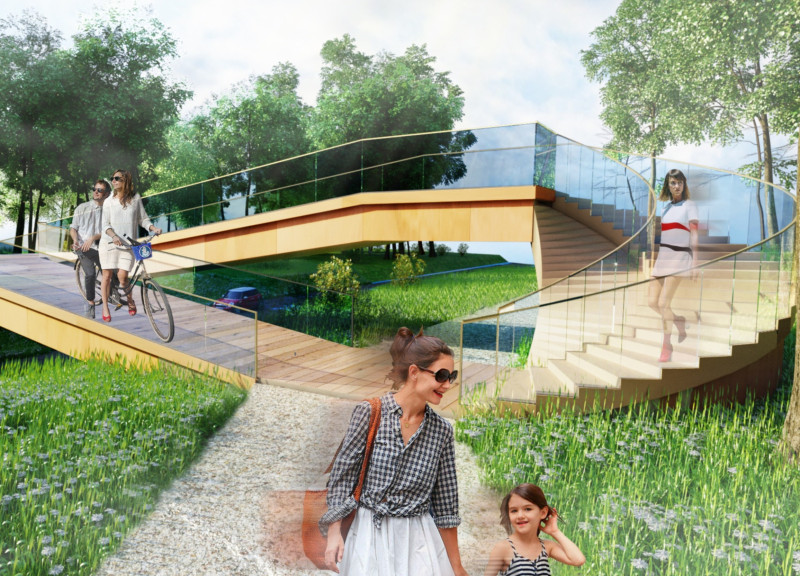5 key facts about this project
The Never-Ending Bridge stands as a new type of pedestrian connection, designed to promote exploration and interaction. Instead of following the usual straight path, it introduces a winding route that encourages people to engage with their surroundings. By linking two endpoints in a way that feels open-ended, it turns the act of walking into a journey that invites reflection and discovery.
Design Concept
At both ends of the bridge, loops create common entry points where pedestrians can gather and choose their direction. This design approach encourages people to interact with one another and enhances the overall experience of crossing the bridge. Visitors can roam along different paths, creating a lively atmosphere and a sense of community as they wander through the space.
Symbolism
The bridge incorporates the idea of a braid, symbolizing the connections between humanity, nature, and history. Each strand of the braid represents a distinct aspect, while still linking together to form a cohesive narrative. This imagery emphasizes the importance of balance and unity, encouraging users to think about their relationship with the surrounding landscape and the bridge itself.
Material Considerations
The structure features a metal space frame, with options for U-shaped and C-shaped profiles. This choice offers strength to support the bridge while allowing for open views and lightness in design. The use of metal contributes to the overall aesthetics and durability, ensuring the bridge serves well in its environment.
As users traverse the Never-Ending Bridge, they encounter a variety of pathways that create a feeling of ongoing movement. The relationship between the architecture and nature enhances the experience, allowing pedestrians to pause and appreciate the thoughtful design that invites exploration and interaction at every turn.



























